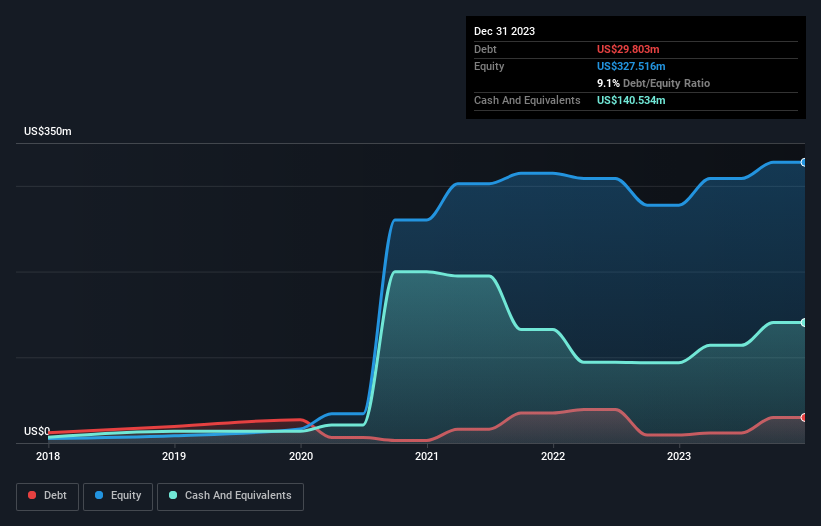David Iben put it well when he said, 'Volatility is not a risk we care about. What we care about is avoiding the permanent loss of capital.' So it seems the smart money knows that debt - which is usually involved in bankruptcies - is a very important factor, when you assess how risky a company is. Importantly, Vesync Co., Ltd (HKG:2148) does carry debt. But the more important question is: how much risk is that debt creating?
Why Does Debt Bring Risk?
Debt and other liabilities become risky for a business when it cannot easily fulfill those obligations, either with free cash flow or by raising capital at an attractive price. Part and parcel of capitalism is the process of 'creative destruction' where failed businesses are mercilessly liquidated by their bankers. However, a more usual (but still expensive) situation is where a company must dilute shareholders at a cheap share price simply to get debt under control. By replacing dilution, though, debt can be an extremely good tool for businesses that need capital to invest in growth at high rates of return. When we examine debt levels, we first consider both cash and debt levels, together.
Check out our latest analysis for Vesync
How Much Debt Does Vesync Carry?
You can click the graphic below for the historical numbers, but it shows that as of December 2023 Vesync had US$29.8m of debt, an increase on US$9.24m, over one year. But on the other hand it also has US$140.5m in cash, leading to a US$110.7m net cash position.

How Strong Is Vesync's Balance Sheet?
We can see from the most recent balance sheet that Vesync had liabilities of US$228.2m falling due within a year, and liabilities of US$9.37m due beyond that. Offsetting these obligations, it had cash of US$140.5m as well as receivables valued at US$193.1m due within 12 months. So it actually has US$96.0m more liquid assets than total liabilities.
This excess liquidity suggests that Vesync is taking a careful approach to debt. Given it has easily adequate short term liquidity, we don't think it will have any issues with its lenders. Succinctly put, Vesync boasts net cash, so it's fair to say it does not have a heavy debt load!
Although Vesync made a loss at the EBIT level, last year, it was also good to see that it generated US$92m in EBIT over the last twelve months. There's no doubt that we learn most about debt from the balance sheet. But it is future earnings, more than anything, that will determine Vesync's ability to maintain a healthy balance sheet going forward. So if you're focused on the future you can check out this free report showing analyst profit forecasts.
Finally, a company can only pay off debt with cold hard cash, not accounting profits. Vesync may have net cash on the balance sheet, but it is still interesting to look at how well the business converts its earnings before interest and tax (EBIT) to free cash flow, because that will influence both its need for, and its capacity to manage debt. Over the last year, Vesync actually produced more free cash flow than EBIT. That sort of strong cash conversion gets us as excited as the crowd when the beat drops at a Daft Punk concert.
Summing Up
While we empathize with investors who find debt concerning, you should keep in mind that Vesync has net cash of US$110.7m, as well as more liquid assets than liabilities. The cherry on top was that in converted 113% of that EBIT to free cash flow, bringing in US$104m. So we don't think Vesync's use of debt is risky. The balance sheet is clearly the area to focus on when you are analysing debt. However, not all investment risk resides within the balance sheet - far from it. We've identified 1 warning sign with Vesync , and understanding them should be part of your investment process.
Of course, if you're the type of investor who prefers buying stocks without the burden of debt, then don't hesitate to discover our exclusive list of net cash growth stocks, today.
New: Manage All Your Stock Portfolios in One Place
We've created the ultimate portfolio companion for stock investors, and it's free.
• Connect an unlimited number of Portfolios and see your total in one currency
• Be alerted to new Warning Signs or Risks via email or mobile
• Track the Fair Value of your stocks
Have feedback on this article? Concerned about the content? Get in touch with us directly. Alternatively, email editorial-team (at) simplywallst.com.
This article by Simply Wall St is general in nature. We provide commentary based on historical data and analyst forecasts only using an unbiased methodology and our articles are not intended to be financial advice. It does not constitute a recommendation to buy or sell any stock, and does not take account of your objectives, or your financial situation. We aim to bring you long-term focused analysis driven by fundamental data. Note that our analysis may not factor in the latest price-sensitive company announcements or qualitative material. Simply Wall St has no position in any stocks mentioned.
About SEHK:2148
Vesync
Engages in the research and development, manufacture, and sale of smart household appliances and smart home devices in North America, Europe, and Asia.
Flawless balance sheet with solid track record.
Similar Companies
Market Insights
Community Narratives




